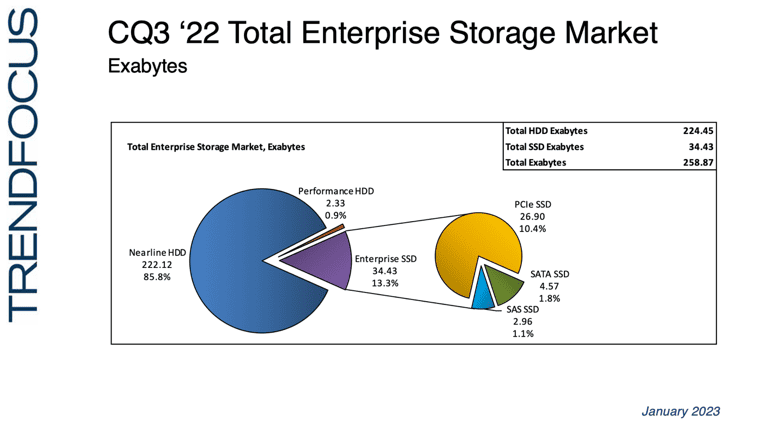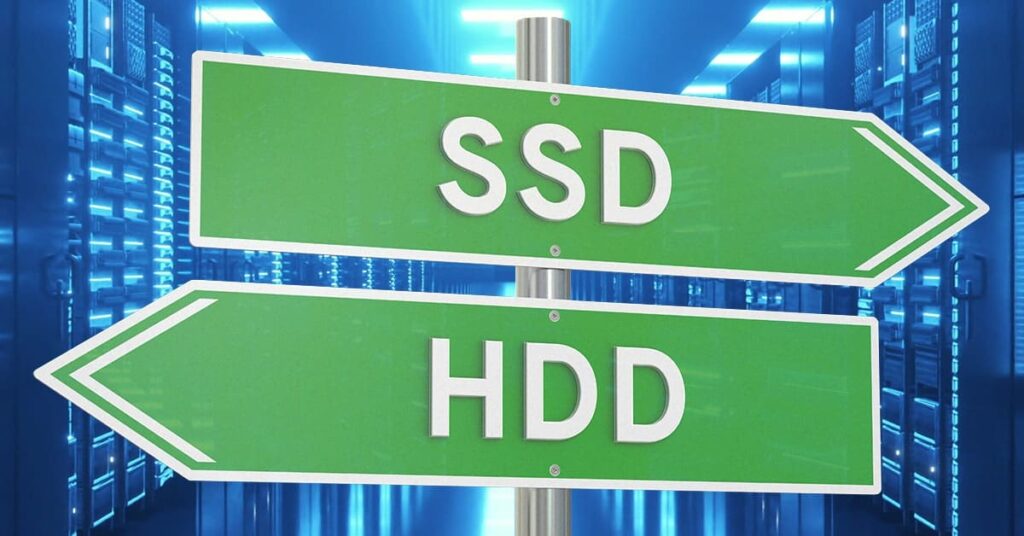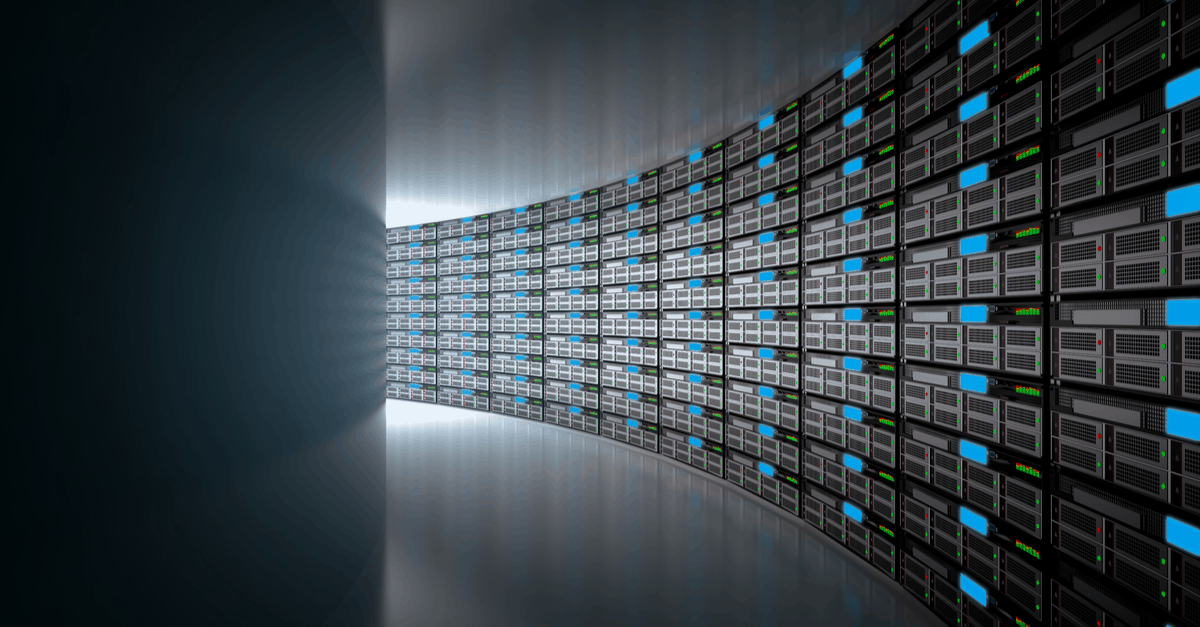What’s the state of SAS? Will the 24G standard help SAS drives thrive in an increasingly flash-first world?
Introduced in 2004, SAS drives are known for greater reliability and higher overall data transfer rates compared with their SATA counterparts. From every angle, SAS (Serial Attached SCSI) drives are designed with the data center in mind.
All incumbents face challenges though, and for SAS (and the wider SCSI stack) that challenge comes in the form of flash—specifically flash-native NVMe. As advances in AI drive demand for low-latency storage solutions, the question emerges: can SAS survive for the long term?
SAS Drives and Marketplace Demand
Enterprise and hyperscale data centers have long formed the primary market for SAS devices. Commercial-grade servers benefit from the improved performance offered by dual-port SAS drives, which typically cost about 10% more than their SATA equivalents.
Nipping at the heels of SAS, however, is NVMe (Non-Volatile Memory express), which began development in 2007 and became commercially available in 2012. Here, the trend lines are clear. NVMe SSDs continue to grow in market share, particularly in the enterprise data center as the market for all-flash arrays (AFAs) gains momentum. According to a report by Transparency Market Research Inc., the NVMe market will continue to grow at a CAGR of 25.8% between 2023 and 2031.
SAS Drives: Timeline and Overview
- 2004: SAS arrives on the scene in as SAS-1 (3.0 Gbit/s).
- Devices offer dual ports, enabling dual-domain SAS.
- SAS controllers can connect to SATA using the SATA backplane.
- Through the use of expanders, SAS offers massively higher throughput than SATA.
- 2007: SAS rival NVMe begins development.
- 2012: NVMe becomes commercially available.
- 2017: The SAS-4 specification (24G, or 22.5 Gbit/s) arrives.
- 2020: Kioxia launches the first 24G SAS SSD.
- 2025/6: The arrival of the SAS 24G+ specification.
Despite this incursion on its territory, SAS infrastructure will remain a key feature of data center architecture, at least for the foreseeable future.
That’s certainly the view of Patrick Kennedy, principal analyst at ServeTheHome. Speaking at an STA webinar on storage trends in early 2023, Kennedy emphasized that SAS “definitely still is a solution that we’re seeing in new servers”. He predicted that “we’re going to see it in more servers and storage arrays in the future, because there’s a huge ecosystem around these.”
Nearline HDD Remains Key
Even as the rise of all-flash arrays and machine learning paves the way to NVMe, that’s not even half the story. Across the traditional and cloud data center, the lion’s share of commercially stored exabytes—85.8% at last count, to be precise—sits not on enterprise flash but on nearline hard drives. Even where these hard drives are SATA native, they generally sit behind SAS infrastructure.

Moreover, the majority of this HDD capacity lives in hyperscale data centers, not in smaller enterprise centers. And there’s every indication that the volume of exabytes sitting with hyperscalers will do nothing but rapidly grow in the next few years. Industry analyst Tom Coughlin projects that in 2028, there will be 4,457 EB of shipped HDD capacity.

The upshot is clear: we are in the early stages of a huge and sustained explosion in data generation. And that’s good news for SAS HDDs.
NVMe For HDD
But before we consider the case closed for the continued relevance of SAS, there is another tantalizing scenario to bear in mind. What if NVMe miraculously extends to hard drives?
In an industry first, Seagate announced in 2021 that it had connected an HDD to a host using PCIe, the expansion bus to which the NVMe protocol typically attaches. While the experimental drive supports SAS and SATA, it is NVMe native.
However, NVMe for HDD faces some real challenges. Even the most state-of-the-art HDDs aren’t fast enough to take advantage of the high-speed transfer PCIe allows. And this is unlikely to change soon, as disks usually spin on at the standard 7200 rpm.
Broadcom’s Rick Kutcipal, representing the SCSI Trade Association (STA), recognizes there’s a lot of energy around NVMe HDD right now. But he adds, “My concern with NVMe HDDs is the amount of standards work that still has to be done to make them work in an enterprise environment.”
“I think people forget. It’s not just taking some media and putting an NVMe interface in front of it,” said Kutcipal in a 2021 STA webinar. “How do all the drive inquiries get mapped to NVMe? How do you manage enterprise large scale spin up?…I think there are a lot of good possibilities, but the amount of work that’s needed can be underestimated sometimes.”
So, while NVMe for HDD is a powerful concept—think of the massive parallelism NVMe could bring to high capacity, multi-actuator HDDs—it has a number of technical and implementation challenges ahead of it.
24G SAS Drives
Given the long-haul challenges SAS faces, it’s little surprise that SCSI advocates focus on improving SAS to keep it competitive.
Here the centerpiece is the development of 24G SAS, a doubling of bandwidth from 12 Gbps. 24G was a long time in the waiting: SCSI Trade Association agreed on the gen 4 specification way back in 2017.
SAS 24G is backwards compatible to 12G SAS (and 6G SAS / SATA), built for enterprise reliability, and offers “a lot more room for innovation in the SCSI stack,” says Kutcipal. Technologies such as SMR and multi-actuator drives have “come into prime time at 24G.” Compared with the 12G standard, the new specification offers such features as forward error correction and continuous adaptation, STA’s Kutcipal explains.
24G SAS can now be found in products such as Kioxia’s PM6 and PM7, and Samsung’s PM1653. Meanwhile, firms such as Microchip have created 24G SAS RAID and HBA adapters.
Despite these products, there are relatively few 24G SAS flash options to choose from. There are also no 24G SAS disk drives currently on the market. Rather than doubling throughput again to 48Gbps, the next move is 24G+, which offers no speed boost.
Chris Mellor at Blocks & Files infers that SCSI is effectively “ceding the high-speed drive interface area to NVMe, [while] it sees a continuing role for SAS in hyperscale storage environments”. Since SAS HDD dominates here, it seems that the fortunes of SAS will be tied quite tightly to those of HDD in the coming years.
Value SAS
Another relatively recent development in SAS is the emergence of value SAS (vSAS) for solid state drives.
Marketed as a new class of SSDs, vSAS drives offer many of the benefits of SAS while aiming for close to parity pricing with enterprise SATA SSD. (To achieve the lower pricing, the manufacturers removed dual port support and the T10 data integrity field while reducing sector size to a maximum of 512 bytes.)
As Matt Ogle, product marketing manager for Dell’s PowerEdge storage devices put it, “Value SAS [offers] a new spin on SAS that maintains the higher performance and reliability while staying at a low cost like SATA.”
TRENDFOCUS VP Don Jeanette also makes the case, observing how SAS offers “more throughput, dual port vs single port, better ECC, some technical and reliability metrics” over SATA. Even when you take dual ports out of the equation as in value SAS, the other benefits remain. With price factored in, vSAS begins to look like a fairly attractive option.
Of course, it’s important to place the SATA/SAS competition in perspective. Even if vSAS kills demand for SATA SSDs, the reality is that the proportion of SATA / SAS SSDs in the total enterprise storage market remains a small slice of the pie, at under 3% measured on a capacity basis due to the continued predominance of HDDs in data centers.
Driving The Future
While the game is far from up for either SAS or SATA drives, the performance boost of NVMe positions the flash-native protocol favorably for the future, particularly as the market for all-flash arrays expands.
For one, there’s little doubt NVMe-based AFAs will continue their ascendancy within the enterprise data center. And some analysts, such as Enrico Signoretti, eventually see smaller data centers primarily running on flash.

Related Reading
All-flash-storage companies like Pure Storage and VAST are on a mission to lower their TCO below that of enterprise HDD. As both firms are NVMe-based, that could give the interface a huge boost if they succeed.
The Price Argument For All-Flash Arrays
The reality, of course, remains more nuanced, particularly in the cloud environment. “It’s pretty clear that SSD and NVMe-based platforms will continue to grow in the coming years as new hardware deployments better optimized to today’s needs and edge applications displace legacy ones,” says Stephen Buckler, chief operating officer of Horizon Technology.
“At the same time, I wouldn’t bet against HDD—the jury remains out. Remember that NAND fab capacity is costly to build. Ultimately, much will depend on the drive makers’ development of HAMR technology to support their roadmaps toward truly massive capacity drives.”
The surge of interest in machine learning may also prove good news for HDD, and thus for the SAS protocol. “AI training, in particular, consumes a great amount of digital storage for modelling data as well as memory to support the processing of that data”, explains storage analyst Tom Coughlin.
If the fate of SAS is indeed tied to that of HDD, the future for SAS appears more promising than the proponents of all-flash, NVME-based solutions might suggest.
SAS Drives and The Data Tsunami
There’s so much data in the offing— a tidal wave of bits waiting to break—that it seems quite likely that data center HDD (buoyed by its favorable economics) will hold its place as the primary storage medium for mass data in the decade ahead.
And within this explosive context, it seems equally likely that SAS will retain its status as a tried and tested interface for mass data storage—at least for the foreseeable future. Nonetheless, we’ll be keeping a close eye on the continued reduction of all-flash data tco, and the impact this will have on the share of interfaces in the storage mix.
For real-time pricing and market insights on SAS drives, get in touch with the expert team at Horizon Technology. With 25 years’ experience managing enterprise drives and enjoying trusted relationships with each of the major drive makers, we offer solutions that will meet your needs while exceeding your expectations.











